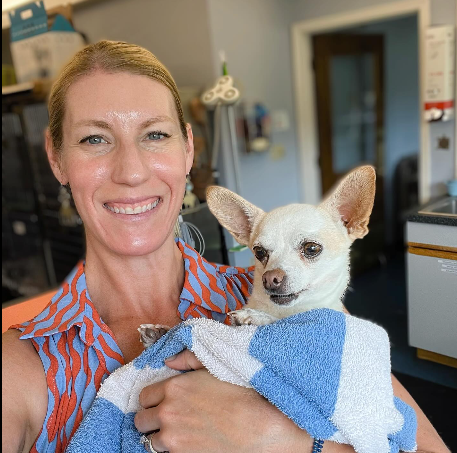Sacculectomy, sometimes known as dog anal gland removal, is a surgical operation used to relieve pain and other health problems related to impacted or infected anal glands. These tiny, sac-like structures, which are situated on either side of the dog’s rectum, are involved in communication and scent marking. Dogs may scoot when these glands are clogged or infected, which can lead to even more serious problems. One way to resolve these problems and enhance a dog’s quality of life is through an anal sacculectomy. This article will cover all there is to know about anal sacculectomy in dogs, including the operation, cost, rehabilitation, and any side effects.
Takeaways
Anal sacculectomy is a surgical procedure for dogs to remove problematic anal glands.
Indications for surgery include recurrent anal gland infections, impactions, abscesses, and inflammation.
Costs for anal gland removal surgery can range from $300 to $800 or more, depending on various factors.
Anal sacculectomy is highly effective in addressing anal gland issues, offering significant relief.
Post-operative care involves pain management, antibiotics, and monitoring for a smooth recovery.
Preventing the need for anal sacculectomy includes measures like a balanced diet, regular exercise, and weight management.
The surgical procedure includes anesthesia, incision, gland removal, closure, and careful monitoring.
Aftercare is essential, including pain management, antibiotics, dietary modifications, monitoring, and activity restrictions.
Potential complications after anal removal surgery can include infection, delayed wound healing, and anesthesia-related issues.
Consult with your veterinarian for guidance and to discuss the procedure, potential costs, pros and cons of Dog Anal Removal.
What is Anal Sacculectomy?
A dog’s anal glands or sacs can be surgically removed during an anal sacculectomy. These glands are in charge of secreting a substance that facilitates boundary marking and canine communication. However, dogs may have discomfort and health problems if these glands become affected, infected, or inflammatory. Anal sacculectomy is the procedure used to remove the troublesome glands in order to treat these issues. When manual expression and other treatments are ineffective, this operation is usually advised. By avoiding recurring problems related to the anal glands, it can greatly enhance a dog’s quality of life.
Indications for Surgery Procedure
Canine anal sacculectomy indications are usually associated with anal gland disorders. Recurrent anal gland infections, impactions, abscesses, or persistent inflammation are a few examples of these signs. Certain dogs are more prone to these problems than others because of things like age, breed, or underlying medical concerns. Scooting, excessive licking or biting of the anal area, discomfort during feces, the existence of anal gland abscesses or recurring infections are common indications that indicate the necessity for an anal sacculectomy. Surgery is frequently thought to be the best course of action to relieve the dog’s discomfort and stop other difficulties when these problems continue or worsen.
How much does anal gland removal surgery cost?
Dogs’ anal sacculectomy costs can vary greatly depending on a number of factors, such as the dog’s size, location, surgery complexity, and veterinary clinic fees. The price might range from $300 to $800 or more on average. Due to the increased difficulty of the surgery, larger breeds may have higher prices than smaller dogs. Geographical location might also affect the price; generally speaking, urban clinics charge more than rural ones. To receive a precise cost estimate for the surgery on your particular dog and to go over any additional costs, like pre-operative testing, post-operative care, and prescriptions, it is imperative that you speak with your veterinarian.
Efficacy of Anal Sacculectomy in Dogs
In dogs, anal sacculectomy is usually a very successful procedure for treating problems related to impacted or infected anal glands. The procedure helps avoid further issues in addition to relieving the dog’s immediate discomfort by eliminating these troublesome glands. It’s frequently seen as the last resort in cases where more conservative measures, including physical therapy or medicine, haven’t shown lasting results. Anal sacculectomy patients usually have a marked increase in their quality of life and a decreased risk of anal gland problems such as inflammation, infections, and abscesses. But, as with any surgical operation, there are possible dangers and consequences, so it’s important to talk to your veterinarian about the pros and cons of the surgery.
Recovery After Anal Sacculectomy in Dogs
In order to achieve optimal recovery, dogs undergoing an anal sacculectomy usually require a period of post-operative care. This could involve controlling pain, using antibiotics to stop infections, and keeping an eye out for any consequences. The majority of dogs can return home the same day as the procedure, however they might need to wear an Elizabethan collar, often called a cone, to keep them from biting or licking the incision site. It’s imperative that you adhere to any post-operative instructions provided by your veterinarian, including any prescription guidelines for drugs, dietary restrictions, and activity limits. Even though healing timeframes could differ, most dogs can resume their regular activities after a few weeks. Your dog’s development will be tracked, and regular follow-up sessions with your veterinarian to make sure the surgery site is healing as expected
Anal Sacculectomy Prevention in Dogs
Preventing the need for anal sacculectomy in dogs involves maintaining good anal gland health. There are several steps you can take to reduce the risk of anal gland issues:
1. Diet: A balanced diet with adequate fiber can help promote regular bowel movements, reducing the risk of anal gland impactions.
2. Regular Exercise: Physical activity supports healthy digestion and can help express the anal glands naturally.
3. Weight Management: Maintaining a healthy weight for your dog can reduce the risk of anal gland problems.
4. Regular Check-ups: Regular veterinary visits allow for the early detection and treatment of anal gland issues.
5. Grooming: For dogs with long or thick fur, keeping the anal area clean and trimmed can help prevent issues.
By incorporating these preventive measures, you can help reduce the likelihood of your dog experiencing anal gland problems and the need for surgery.
Anal Sacculectomy Procedure in Dogs:
The anal sacculectomy procedure in dogs involves several key steps:
1. Anesthesia: The dog is placed under general anesthesia to ensure they remain immobile and pain-free during the surgery.
2. Incision: A small incision is made in the area near the anal glands to access the sacs.
3. Gland Removal: The surgeon carefully removes the anal glands, taking care not to damage surrounding structures.
4. Closure: The incision is closed with sutures, and the surgical site is typically covered to prevent contamination.
5. Monitoring: The dog is monitored during recovery to ensure a smooth wake-up from anesthesia.
The procedure is usually relatively short, and most dogs can return home on the same day.
Dog Anal Removal Aftercare:
After the surgery, dog anal removal aftercare is a crucial part of ensuring a successful recovery. Key components of aftercare include:
1. Pain Management: Your veterinarian may prescribe pain medications to keep your dog comfortable during the healing process.
2. Antibiotics: Antibiotics are often prescribed to prevent infection at the surgical site.
3. Dietary Modifications: Your veterinarian may recommend dietary changes to ensure smooth bowel movements and reduce strain on the surgical site.
4. Monitoring: Regular check-ups with your veterinarian are essential to track your dog’s progress and address any concerns promptly.
5. Activity Restrictions: It’s essential to limit your dog’s physical activity during the initial stages of recovery to prevent strain on the surgical area.
Complications After Dog Anal Removal
While anal sacculectomy is generally safe and effective, like any surgical procedure, there can be potential complications. These may include infection, delayed wound healing, or issues related to anesthesia. It’s crucial to monitor your dog closely during the recovery period and follow your veterinarian’s instructions. If you notice any signs of complications, such as excessive swelling, discharge, or behavioral changes, contact your veterinarian promptly.
Conclusion
Anal sacculectomy, or dog anal gland removal, is a surgical procedure that can provide significant relief for dogs experiencing discomfort and health issues related to their anal glands. While the cost of the Although the results of surgery can vary, it is often a worthwhile option for dogs with anal gland disorders since it can enhance quality of life and avoid future concerns. Speak with your veterinarian if you think your dog will benefit from an anal sacculectomy. They can offer advice on the process, associated fees, and what to expect from your pet.
Po

Dr. Allison Kramer is a seasoned veterinarian with a Master’s degree in Animal Behavior and over 10 years of experience specializing in canine health and behavior. Her expertise in positive reinforcement training and holistic care enhances the well-being of dogs and fosters strong pet-owner relationships. For expert advice and valuable insights, follow Dr. Kramer on Instagram @dr.allisonkramer.





